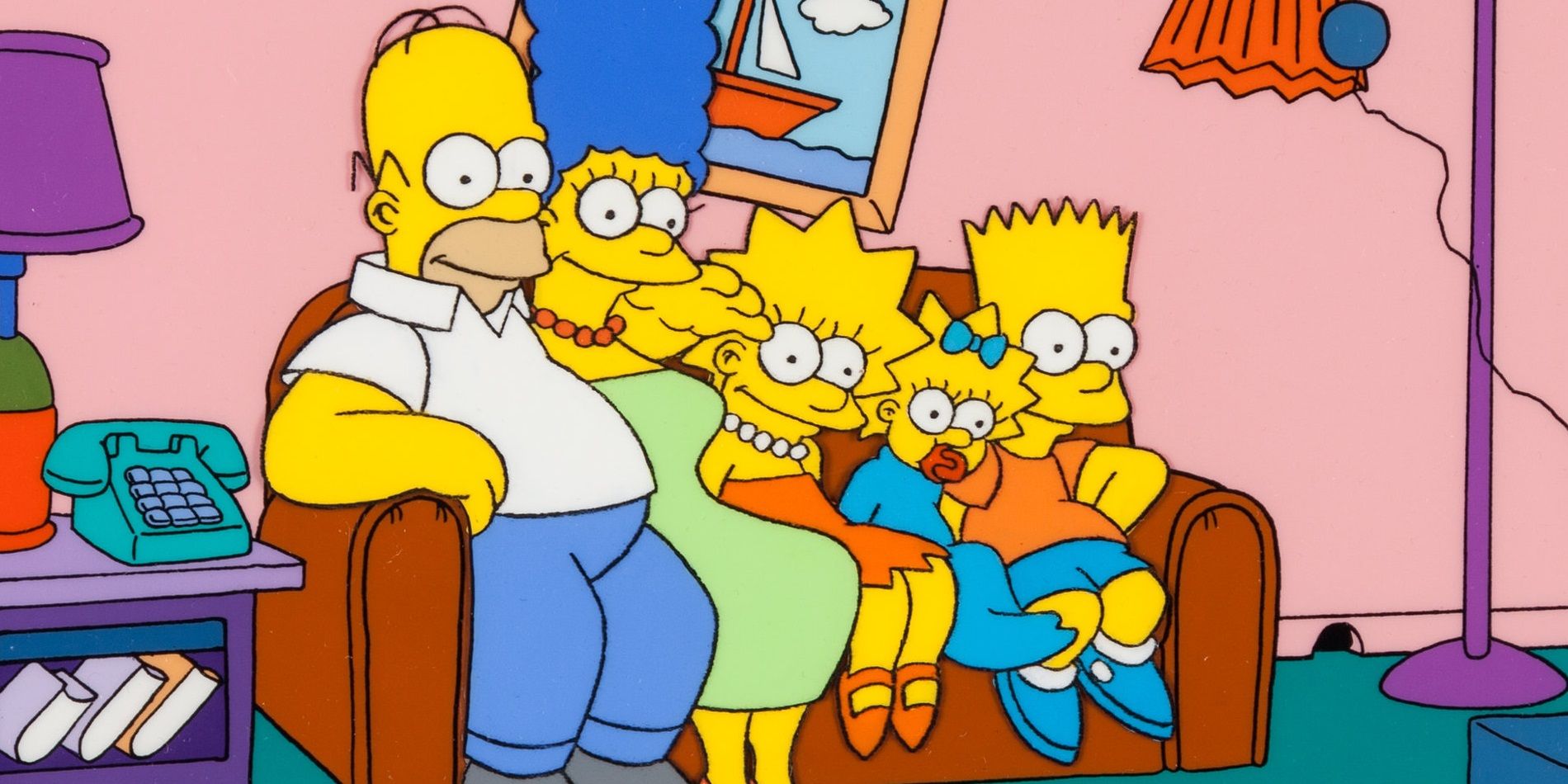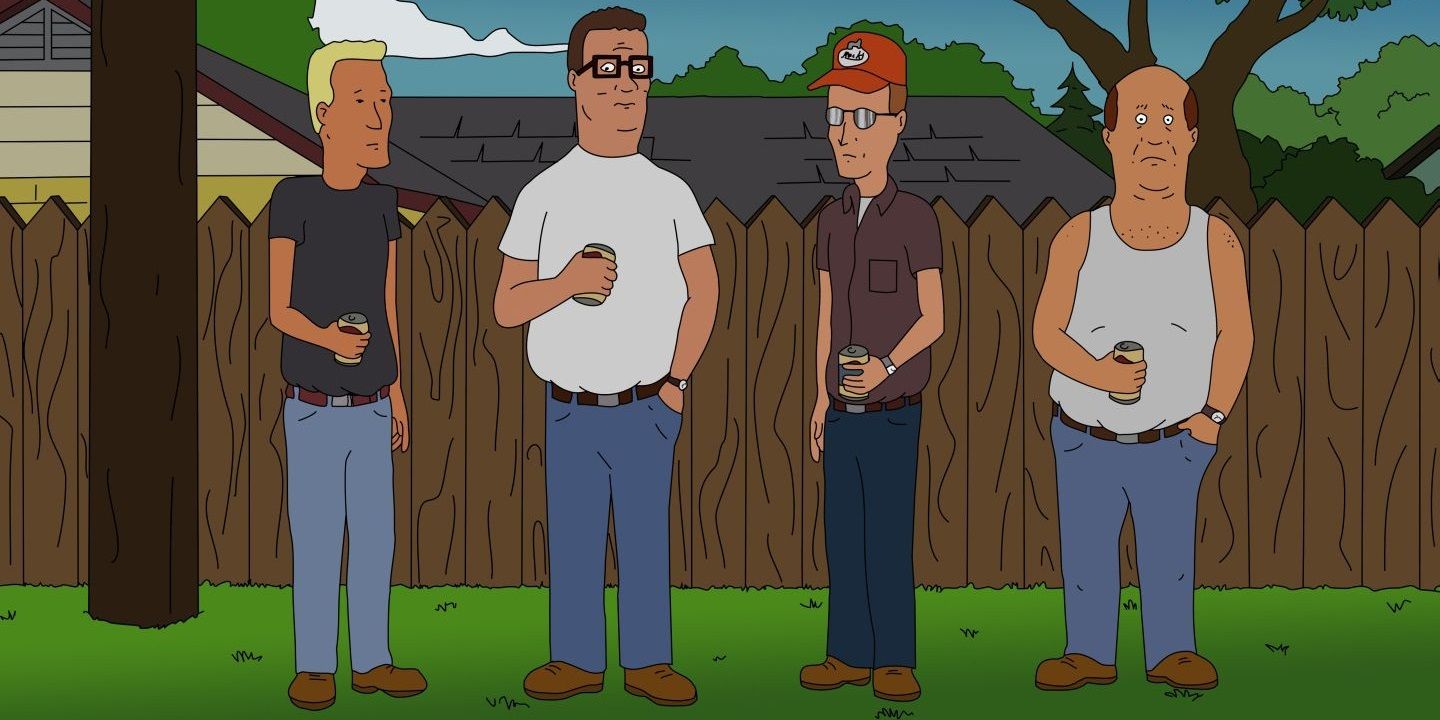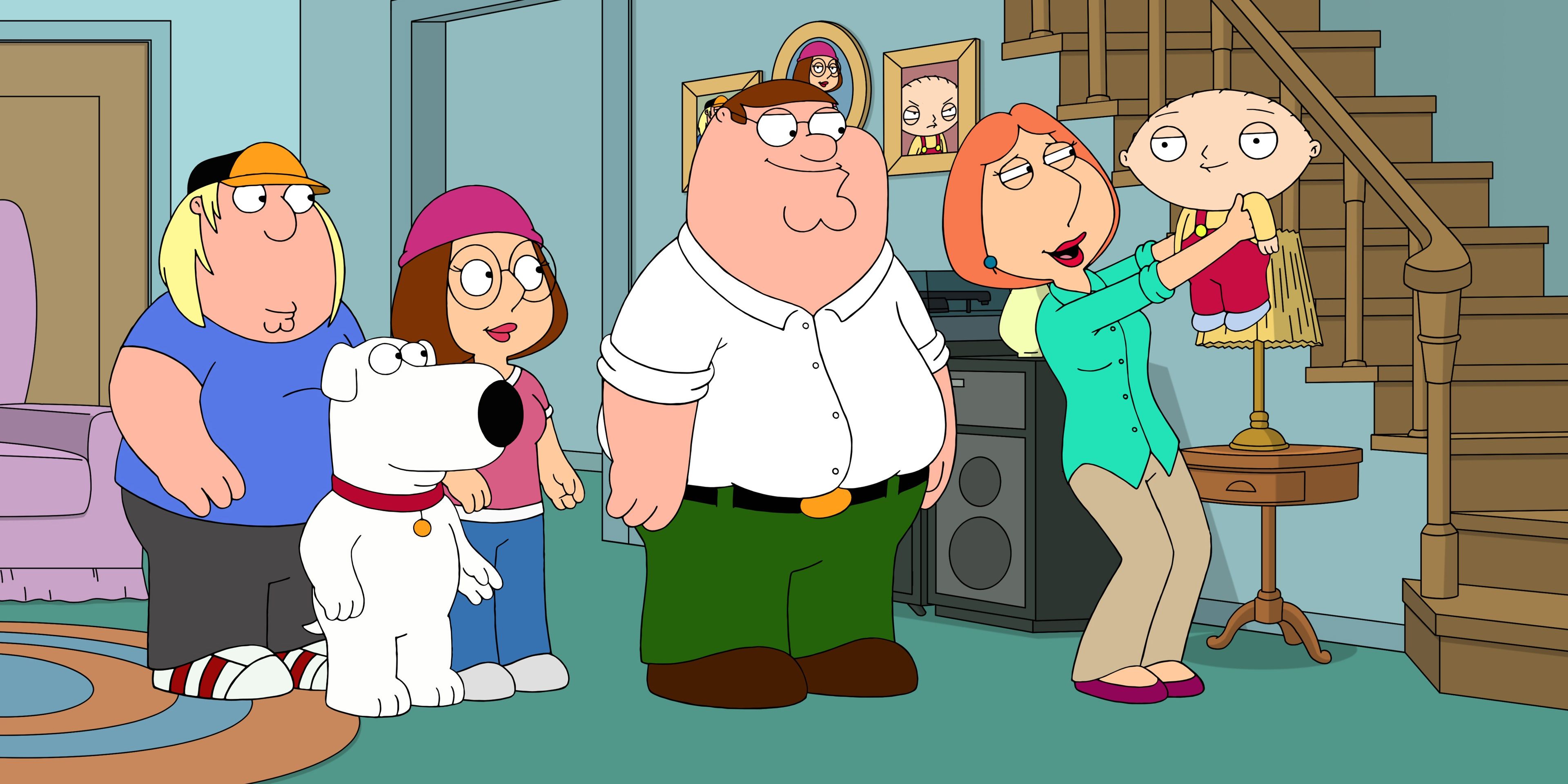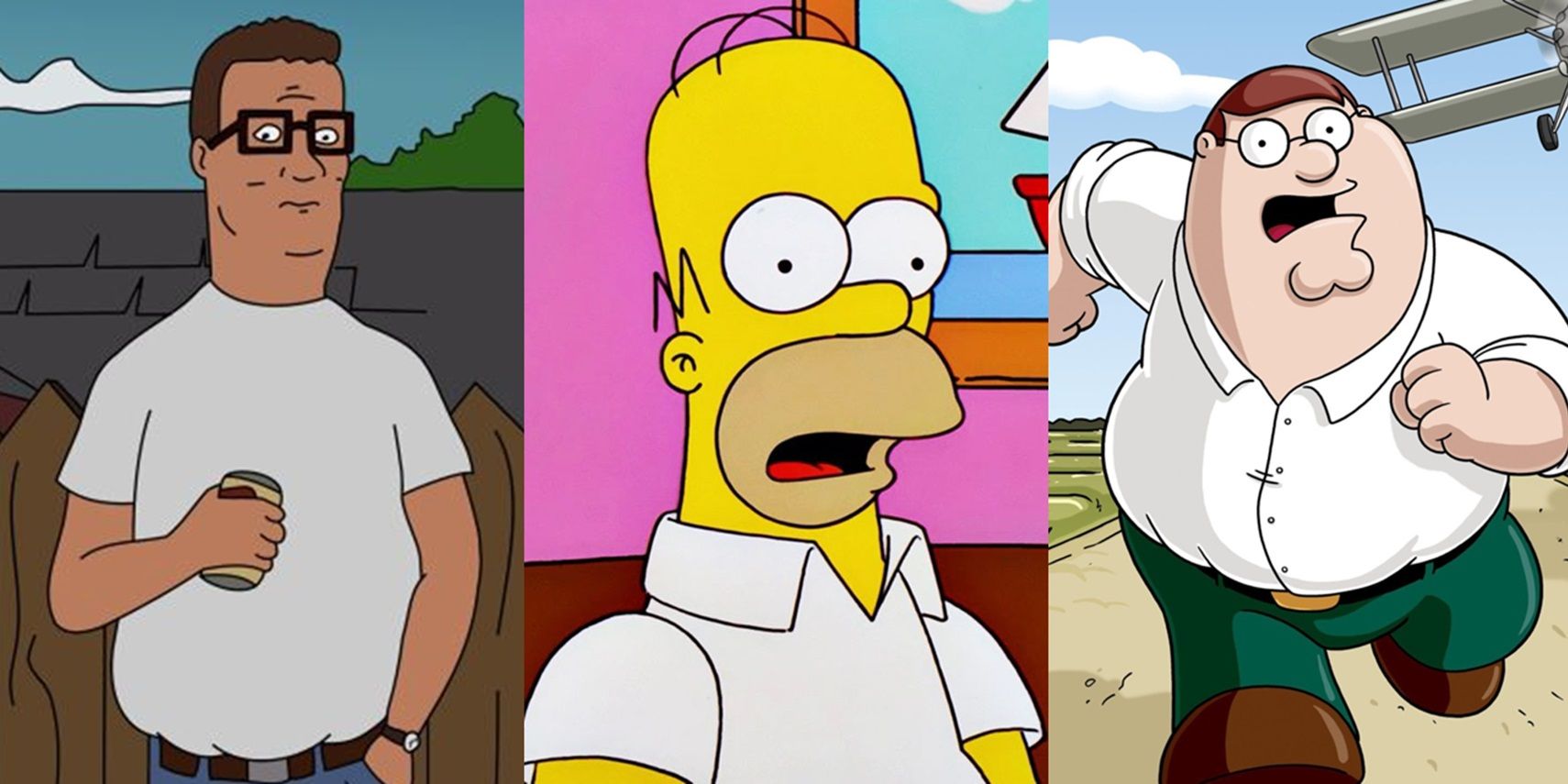When The Simpsons graduated from The Tracey Ullman Show to get its own primetime half-hour series, television was changed forever. No longer were cartoons just for children on Saturday mornings. Grown-ups could enjoy the antics of Matt Groening’s yellow-skinned nuclear family just as much as their kids could.Both King of the Hill and Family Guy are adult-oriented animated family sitcoms on Fox riding the coattails of The Simpsons’ success. But, whereas Family Guy is often accused of ripping off Groening’s series, King of the Hill has never faced the same scrutiny.The Simpsons marked a watershed moment in the history of comedy. All the comedy after The Simpsons was influenced by its unique, game-changing sensibility. The show’s combination of family situations and Pythonesque surreal humor captured the zeitgeist and made it one of the foremost cultural monuments of the ‘90s. Naturally, when The Simpsons became a ratings giant, Fox greenlit a handful of other adult-oriented family sitcoms, including King of the Hill from Mike Judge and Family Guy from Seth MacFarlane. While both series borrowed the concept of the animated adventures of a blue-collar American family from The Simpsons, Family Guy borrowed a few more elements. Lois is a housewife like Marge, the Griffins have three kids (a boy, a girl, and a baby) like the Simpsons, and Quahog is a fictional town full of colorful supporting characters like Springfield. By contrast, Peggy Hill is a substitute teacher, Bobby is an only child, and while Arlen is a fictional Texas town, it’s an amalgamation of various real-life suburbs in the Dallas-Fort Worth area. Even the things that make Family Guy unique – like the cutaway gags – are prevalent in the early seasons of The Simpsons before the writers phased them out.Above all, what sets King of the Hill apart from The Simpsons – and what makes Family Guy so similar to it – is the comedic tone. Family Guy borrowed The Simpsons’ absurdist anything-goes sensibility, but King of the Hill positioned itself as the anti-Simpsons with a grounded style, minimalist animation, and relatable situations.
While both series borrowed the concept of the animated adventures of a blue-collar American family from The Simpsons, Family Guy borrowed a few more elements. Lois is a housewife like Marge, the Griffins have three kids (a boy, a girl, and a baby) like the Simpsons, and Quahog is a fictional town full of colorful supporting characters like Springfield. By contrast, Peggy Hill is a substitute teacher, Bobby is an only child, and while Arlen is a fictional Texas town, it’s an amalgamation of various real-life suburbs in the Dallas-Fort Worth area. Even the things that make Family Guy unique – like the cutaway gags – are prevalent in the early seasons of The Simpsons before the writers phased them out.Above all, what sets King of the Hill apart from The Simpsons – and what makes Family Guy so similar to it – is the comedic tone. Family Guy borrowed The Simpsons’ absurdist anything-goes sensibility, but King of the Hill positioned itself as the anti-Simpsons with a grounded style, minimalist animation, and relatable situations. In both The Simpsons and Family Guy, characters will be horrifically injured in one scene and be fine in the next; non-sequitur pop culture references can come out of nowhere and take over a situation; and celebrities show up all the time and no one bats an eye. By contrast, King of the Hill is much more realistic. Despite being a cartoon, it depicts everyday life with a naturalistic style. If something ridiculous happens, like a tornado blowing off all of Hank’s clothes, then the show explores the real-life ramifications of such a scenario (in that case, Hank has to choose between maintaining his dignity and racing naked to the nearest shelter).There’s very little that separates Peter Griffin’s characterization from Homer Simpson’s. They’re both overweight, dim-witted, negligent fathers who spend all their time at the local bar and get a random new job every other episode. Hank Hill, on the other hand, couldn’t have less in common with Homer. He’s smart, sensible, conservative, and although he spends his days drinking beer next to a picket fence with his friends, he always puts his wife and son first.
In both The Simpsons and Family Guy, characters will be horrifically injured in one scene and be fine in the next; non-sequitur pop culture references can come out of nowhere and take over a situation; and celebrities show up all the time and no one bats an eye. By contrast, King of the Hill is much more realistic. Despite being a cartoon, it depicts everyday life with a naturalistic style. If something ridiculous happens, like a tornado blowing off all of Hank’s clothes, then the show explores the real-life ramifications of such a scenario (in that case, Hank has to choose between maintaining his dignity and racing naked to the nearest shelter).There’s very little that separates Peter Griffin’s characterization from Homer Simpson’s. They’re both overweight, dim-witted, negligent fathers who spend all their time at the local bar and get a random new job every other episode. Hank Hill, on the other hand, couldn’t have less in common with Homer. He’s smart, sensible, conservative, and although he spends his days drinking beer next to a picket fence with his friends, he always puts his wife and son first. In a typical Simpsons episode – take season 6’s “Homer the Great,” for example – Homer stumbles upon a global secret society and learns that he’s the “chosen one” destined to be their de facto leader. Compare that to a typically grounded King of the Hill episode, like season 1’s “Hank’s Unmentionable Problem,” in which Hank suffers from constipation and later embarrassment when Peggy spreads the news around town. A typical Family Guy episode – say, season 4’s “North by North Quahog” – is much more on the absurdist, out-there Simpsons end of the spectrum. It starts off with a relatable situation (Peter and Lois going on a second honeymoon to spice up their marriage), but takes a zany turn when they steal a film print of Passion of the Christ 2: Crucify This and go on the run from Mel Gibson and his band of sinister priests.The argument could be made that the outlandish style of The Simpsons and Family Guy makes full use of the creative freedom of the animated medium, whereas the grounded scenarios of King of the Hill could just be shot in live-action. But that argument misses the point. King of the Hill’s subversively plain aesthetic offers a vibrant snapshot of Americana akin to a Norman Rockwell painting. A traditional multi-camera sitcom couldn’t possibly capture that.Frankly, there’s room in the comedy landscape for both styles. Absurdist comedy with no concern for reality is great – eight seasons of The Simpsons’ “golden age” can attest to that – but grounded, relatable situations like the ones found in King of the Hill can resonate on a deeper level.
In a typical Simpsons episode – take season 6’s “Homer the Great,” for example – Homer stumbles upon a global secret society and learns that he’s the “chosen one” destined to be their de facto leader. Compare that to a typically grounded King of the Hill episode, like season 1’s “Hank’s Unmentionable Problem,” in which Hank suffers from constipation and later embarrassment when Peggy spreads the news around town. A typical Family Guy episode – say, season 4’s “North by North Quahog” – is much more on the absurdist, out-there Simpsons end of the spectrum. It starts off with a relatable situation (Peter and Lois going on a second honeymoon to spice up their marriage), but takes a zany turn when they steal a film print of Passion of the Christ 2: Crucify This and go on the run from Mel Gibson and his band of sinister priests.The argument could be made that the outlandish style of The Simpsons and Family Guy makes full use of the creative freedom of the animated medium, whereas the grounded scenarios of King of the Hill could just be shot in live-action. But that argument misses the point. King of the Hill’s subversively plain aesthetic offers a vibrant snapshot of Americana akin to a Norman Rockwell painting. A traditional multi-camera sitcom couldn’t possibly capture that.Frankly, there’s room in the comedy landscape for both styles. Absurdist comedy with no concern for reality is great – eight seasons of The Simpsons’ “golden age” can attest to that – but grounded, relatable situations like the ones found in King of the Hill can resonate on a deeper level.

